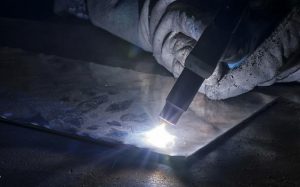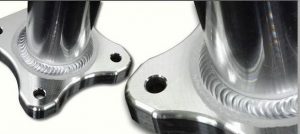Aluminum Welding Cheats – Optimization Method for Aluminum Alloy Welding Deformation
The welding deformation of the aluminum alloy in the welding process can be performed by various means. In the design stage, the relevant stress deformation test can be used to analyze the size of the stress, adjust the size of the weld in combination with the allowable value of the design, minimize the number of welds, and control the residual deformation after welding; during the welding process In the process, some anti-deformation or rigid fixed assembly methods are used to prevent the weld; after welding, in order to reduce the residual deformation that has occurred, it is possible to adopt a heat correction or a method using mechanical external force for correction. Of course, the most effective method is based on the theory of related deformation research, combined with welding test, to optimize the welding process, and to set the parameters of the actual aluminum alloy components, and scientifically control the welding stress and deformation of the aluminum alloy. Produce products that meet design requirements.

1, the choice of welding wire
aluminum welding
In the welding process of aluminum alloys, the diameter, composition and surface quality of the welding wire are related to the mechanical properties of the weld metal and heat-affected zone, especially the welding deformation. Therefore, selecting a reasonable diameter of the wire and selecting a wire with a superior surface quality and chemical composition is one of the main steps in optimizing the welding process. Under normal circumstances, in order to ensure the quality of the welding, the welding wire with a large wire diameter is mainly selected. However, because the diameter of the welding wire is too large, welding of thin aluminum alloys is not beneficial. Therefore, based on the existing practice, the choice of the diameter of the welding wire is generally gradually increased with the increase in the thickness of the aluminum alloy. In addition, the diameter of the welding wire should be relatively large when performing flat welding, and the smaller welding wire should be selected during vertical welding and horizontal welding.
2, the choice of welding power
aluminum welding
As the main source of energy in the aluminum alloy welding process, the welding power source needs to select those that can meet the requirements of the welding process and meet the user’s material, economic, and technical conditions when choosing the type and polarity of the power supply in order to achieve the welding quality. power supply. In general, arc welding of a DC power source is preferred because it has good stability, excellent welding quality, and small spatter.
3, the choice of welding current
aluminum welding
After analysis and discussion of the aluminum alloy welding thermal process and deformation theory, we found that selecting the appropriate welding current is an important means to optimize the welding deformation. The size of the welding current has a direct impact on the welding production efficiency and welding quality. Generally, in order to improve the welding production efficiency, under the premise of quality assurance, the welding current is selected as large as possible so as to achieve the purpose of improving the welding efficiency. However, because the current is too large, the heat penetration and the excess height of the weld caused by the excessive heat input and the presence of a large arc force cause the strength and bearing capacity of the joint to decrease. Therefore, in the choice of welding current, it is still necessary to select a suitable current through practice.

4, the choice of arc voltage
aluminum welding
Since the length of the arc also has a significant influence on the quality of the welding, and the arc voltage determines the length of the arc, when welding, according to the welding test, it is necessary to control the arc voltage and generate a suitable length of arc length for welding.
In the welding process of aluminum alloy, in order to achieve the control and reduction of the welding deformation, a welding heat source with a high energy density should generally be adopted. At the same time, the welding speed is optimized to ensure that the welding speed is neither too fast nor too slow. . For example, relevant practice shows that when welding aluminum alloy plates with a thickness of 6 mm, the welding current is defined as 170 A, the welding arc voltage is 25 V, and the strength of the welded joint can achieve good results.

